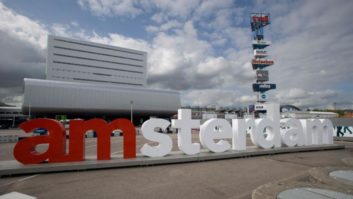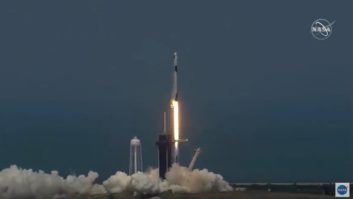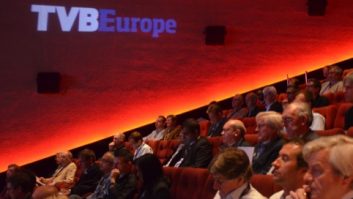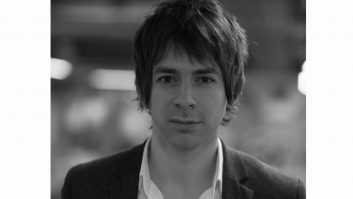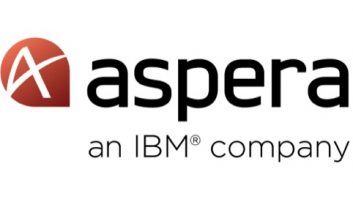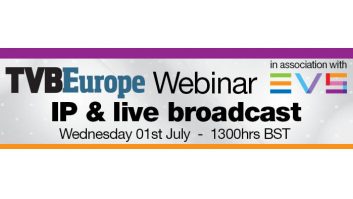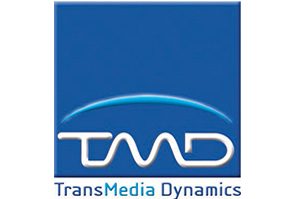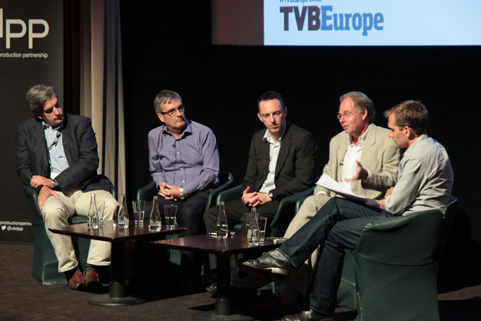
TVBEurope’s annual IT Broadcast Workflow conference takes place in one week. Now in its sixth year, ITBW was born out of the need for a forum where broadcast industry professionals could share ideas about the ever-shfting landscape of file-based production. Tickets are still available via the event website.
Held at London’s BAFTA on 3 July, IT Broadcast Workflow will look at a range of issues, from the construction of new file-based broadcast facilities to challenges in asset management.
The software-centric workflow has revolutionised the way we produce content, but there are still plenty of bugs in the system. Mikhail Kalanchekaev, executive director of OKNO-TV, believes that one of the principle challenges is interoperability.
“Things are getting better recently, but wrappers, codecs, custom metadata and specific structures usage is still a pain point for interoperability between different solutions,” says Kalanchekaev, “Some of the issues have physical roots, but in most of the cases problems can be resolved with good will of the manufactures.”
IT Broadcast Workflow will feature a case study from BBC Northern Ireland on the transformations it has undergone since installing its software-based infrastructure in 2008 and the cost savings made as its workflows have evolved from SD SDI tape workflows to HD card-based migration to the world of IP. Sponsored by Cinegy, the session will feature Clive Jones, media technologies manager, BBC NI, and BBC NI’s head of technology and operations, Mervyn Middleby.
The conference will also hold a special panel on Loudness, sponsored by Emotion Systems. The panel will feature Craig Russill-Roy of Adstream to talk about Loudness from the advertising perspective. Russill-Roy will discuss the challenges advertisers face in distributing Loudness compliant content on a global scale.
“Adstream have delivered millions of commercials globally over the past decade,” says Russill-Roy, “The main issue we see is the lack of common file based knowledge and limitations of codecs. With the global changing of post production, commercials are being produced in one region to cut costs, this puts a lot of pressure on producers to understand the regulations and restrictions of global commercial distribution. Receiving a 1920x1080p2997 CALM Act file is not compliant for a UK broadcast, even if the USA Agency states ‘Well, it is HD’. At the end of the day, digital does not fix the problems. It can create new problems in the wrong hands.”
Ericsson’s strategic solutions architect, Simon Leppington, will also join the Loudness conversation to cast light on file-based preparation and playout for broadcasters.
“One of the most significant challenges in file-based workflows is correctly estimating and kitting-up for throughput in large-scale file-based environments,” says Leppington, “It could mean auditing and beefing-up firewalls and available leased lines and internet bandwidth infrastructure. These can sometimes be overlooked or under-estimated – delivery is not always constant across time. It’s wise to build in capacity to allow for late delivery or re-submissions that require fast-tracking.”
Emotion Systems’ CEO, MC Patel, will also participate. Patel has had plenty of experience in imposing order on the chaos of file-based workflows. Emotion Systems specialises in audio software, including eFF, it’s suite of audio tools for Loudness compliance.
“What file-based workflows allow is a more flexible delivery method,” says Patel, “When we had a tape-based workflow we were generally relying on a single delivery point, broadcast transmission. File-based workflow allows you to deal more easily with different levels of video quality. File-based workflow lends itself to being able to create these multiple masters and distribute them more easily. Whereas a tape-based workflow is generally specific to a resolution.”
The question of Loudness metering is still confusing to some people. What is Loudness anyway? And why exactly are we moving from Peak-based measurement to Loudness? And for that matter, what is Peak-based measurement?
It’s important, says Patel, to understand why we needed to make the change in the first place. “Using a Loudness-based delivery standard gives you a better potential for creative audio. By using the average audio level of a programme it gives you the opportunity to balance the dynamic range and used the dynamic range of the spectrum, whereas the old peak-based measurement really didn’t relate to the range of audio we could use.”
Visual effects companies were early adopters of file-based workflows, often leading the charge in the manipulation of large files across multiple locations, and working collaboratively with them across multiple teams.
Simon Robinson, chief scientist and co-founder of visual effects software developer The Foundry will take part in a VFX discussion panel at the IT Broadcast Workflow conference. The Foundry was a pioneer in software development for compositing and effects. Its compositor, NUKE, originally developed by Digital Domain, has become the company’s flagship software and is used throughout the industry.
With ubiquitous connectivity and huge processing power at everyone’s fingertips, how does Robinson see workflows changing in the next few years?
“It’s hard to know quite when it reaches the tipping point, where the processing power becomes a game-changer, because the technical hurdles to move the required amount of data and workflow around cloud infrastructure are still quite significant. The startups we’ve seen around cloud-based rendering of CG, for example, aren’t as successful as we might have thought they would be,” he says.
But despite more robust workflow, better connectivity, remote production, and tremendous scalability, the endless push for greater and greater efficiency is still the great driver.
“The big challenge is getting more for less,” says Robinson, “Maybe it always has been. Efficiency gains over time mean that customers expect higher quality and faster turnaround for less money. The consumers of media are becoming more and more discerning about visual quality, because they are acclimatised to a feature-film world where anything can be made real (real to today’s standards – I bet in ten years time we’ll be looking back and seeing the cracks). And because the cost of setting up a small team is relatively low, in hardware and software costs, there’s a lot of competition bubbling up, and it could be anywhere in the world.”
Tickets for IT Broadcast Workflow are available at: www.broadcastworkflow.com.
www.adstream.com
www.bbc.co.uk/northernireland
http://emotion-systems.com
www.ericsson.com
www.thefoundry.co.uk
